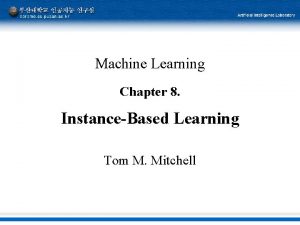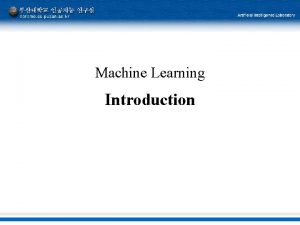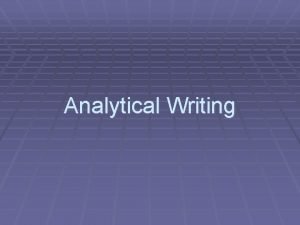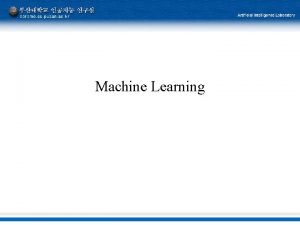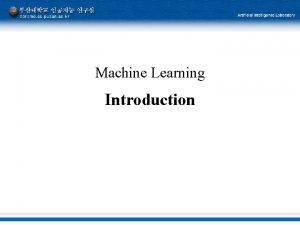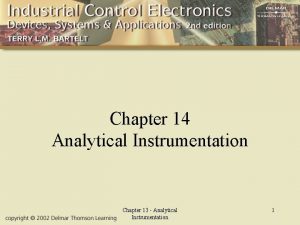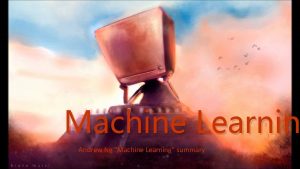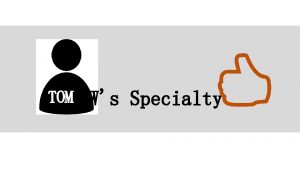Machine Learning Chapter 11 Analytical Learning Tom M













- Slides: 13

Machine Learning Chapter 11. Analytical Learning Tom M. Mitchell

Outline § Two formulations for learning: Inductive and Analytical § Perfect domain theories and Prolog-EBG 2

A Positive Example 3

The Inductive Generalization Problem § Given: – Instances – Hypotheses – Target Concept – Training examples of target concept § Determine: – Hypotheses consistent with the training examples 4

The Analytical Generalization Problem(Cont’) § Given: – – – Instances Hypotheses Target Concept Training examples of target concept Domain theory for explaining examples § Determine: – Hypotheses consistent with the training examples and the domain theory 5

An Analytical Generalization Problem 6

Learning from Perfect Domain Theories § Assumes domain theory is correct (errorfree) – Prolog-EBG is algorithm that works under this assumption – This assumption holds in chess and other search problems – Allows us to assume explanation = proof – Later we’ll discuss methods that assume approximate domain theories 7

Prolog EBG Initialize hypothesis = {} For each positive training example not covered by hypothesis: 1. Explain how training example satisfies target concept, in terms of domain theory 2. Analyze the explanation to determine the most general conditions under which this explanation (proof) holds 3. Refine the hypothesis by adding a new rule, whose preconditions are the above conditions, and whose consequent asserts the target concept 8

Explanation of a Training Example 9

Computing the Weakest Preimage of Explanation 10

Regression Algorithm 11

Lessons from Safe-to-Stack Example § Justified generalization from single example § Explanation determines feature relevance § Regression determines needed feature constraints § Generality of result depends on domain theory § Still require multiple examples 12

Perspectives on Prolog-EBG § Theory-guided generalization from examples § Example-guided operationalization of theories § "Just" restating what learner already "knows“ Is it learning? § Are you learning when you get better over time at chess? – Even though you already know everything in principle, once you know rules of the game. . . § Are you learning when you sit in a mathematics class? – Even though those theorems follow deductively from the axioms you’ve already learned. . . 13
 Analytical learning in machine learning
Analytical learning in machine learning Inductive vs analytical learning
Inductive vs analytical learning Analytical learning vs inductive learning
Analytical learning vs inductive learning Machine learning tom
Machine learning tom Cmu tom mitchell
Cmu tom mitchell Tomtom go 910 update
Tomtom go 910 update Symbolism in the devil and tom walker
Symbolism in the devil and tom walker Concept learning task in machine learning
Concept learning task in machine learning Pac learning model in machine learning
Pac learning model in machine learning Pac learning model in machine learning
Pac learning model in machine learning Instance based learning in machine learning
Instance based learning in machine learning Inductive learning machine learning
Inductive learning machine learning First order rule learning in machine learning
First order rule learning in machine learning Lazy vs eager
Lazy vs eager



